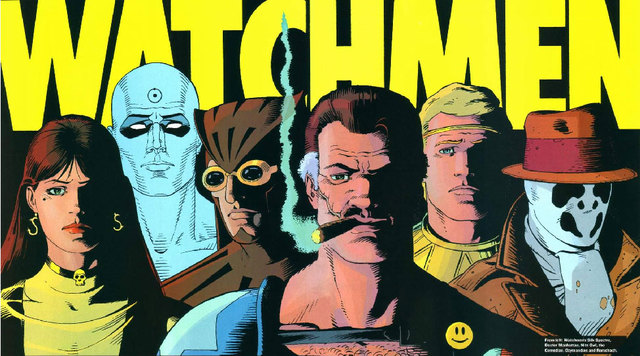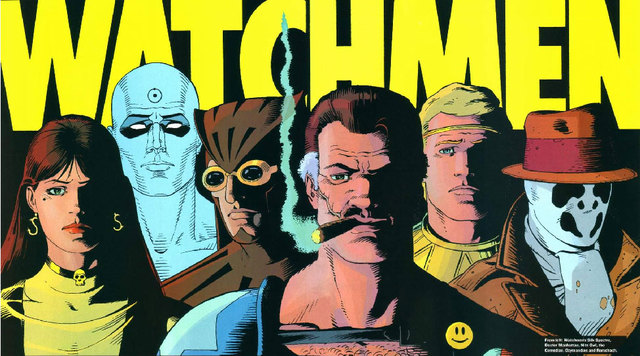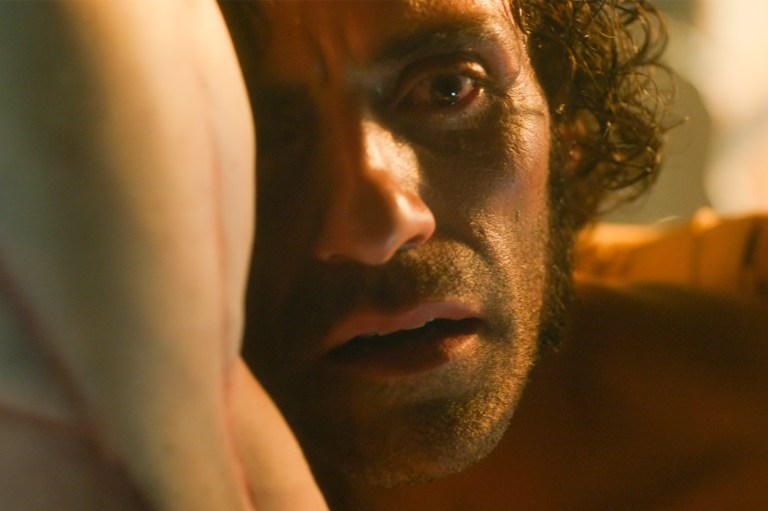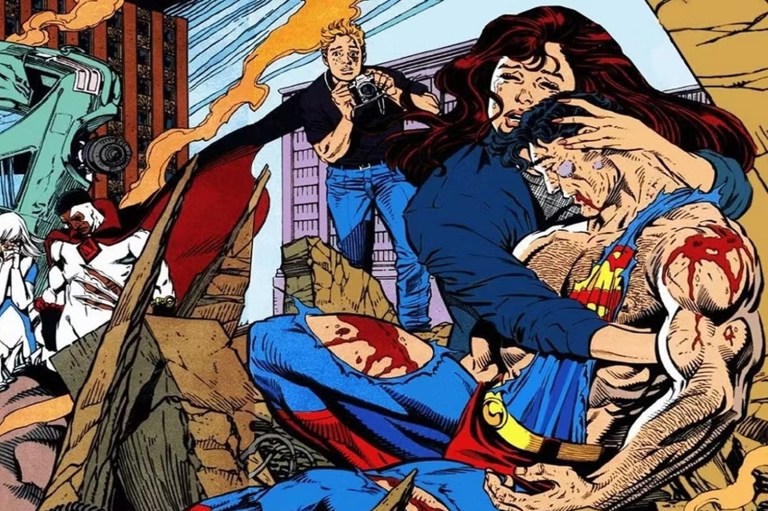
6 Reasons You Need To Start Reading Comic Books

1. Elevated thinking/reading:
As Scott McCloud explains in his book Understanding Comics, comics teach our brains to read and digest text from ‘the gutter,’ or the space between frames of a comic book page. We use our imaginations or knowledge of sequence and patterns to piece together parts of a story that aren’t explicitly drawn on the page. In a way, our minds become the driving force behind reading a comic or graphic novel. Reading graphic novels is the most participatory form of reading, and your brain learns to read in an entirely different way. If you’ve ever read one of Neil Gaiman’s Sandman Chronicles, you know that comics are not just a lined up row of boxes with artwork and text. Sometimes it takes a great deal of concentration to decode what a graphic page says, and even more important, what the subtext of that page is. Try reading a page of Alan Moore and Dave Gibbons’ WATCHMEN and tell me comic reading is easy. Comics are art; from the lettering (if you didn’t know, most comics employ a letterer or a calligrapher, seeing as how that falls outside the scope of the writer and the artist) to artwork to the actual story. When reading a graphic novel, we become the driver of the story.
2. Graphic novels (comics) are more than merely superhero stories.
Don’t quite buy into anything that aligns with Captain America or Superman? There are so many phenomenal comic books and graphic novels that it would be a shame if anyone shied away from the medium simply because they didn’t know what is out there. Maus by Art Spiegelman is arguably the most famous use of the graphic novel medium. It tells the factual account of Spiegelman’s father as a Holocaust survivor of World War II. Spiegelman proves that even the most horrific stories can be told in muted, yet beautiful, cartoon artwork, in which Jews are mice, Americans are golden retrievers, and Nazis are cats. You must read it to understand its weight and significance. There’s Harvey Pekar’s American Splendor which is about the banalities of everyday life and his experience with cancer in Our Cancer Year. There’s Marjane Satrapi’s Persepolis, which details her personal experience as an Iranian young woman during the Islamic Revolution. There’s Alison Bechdel’s Fun Home: An American Tragicomic, about her parents’ divorce and the relationship she maintains with her father thereafter. The point is that there are comics about everything, and a style to suit everyone. Once you start reading one series or graphic novel, you are sure to be lead to other series, other graphic novels that suit your tastes and bring you enjoyable reading.
3. If you ARE into superhero stories, you’ll understand much more of the muted subplots.
Once you begin reading a comic series, you learn that there is usually an extensive back catalog of the comic ‘canon,’ if you will. Comics are a beautiful thing in that there are any number of series about the same superhero written by different combinations of authors and artists. Neil Gaiman, for example, employs several different artists per one graphic novel, so as to maintain an ever-shifting appearance of his Endless in the world of the Sandman. Once you start reading Spiderman comics, you’ll realize that Peter Parker’s REAL first love was Gwen Stacy, and that Marc Webb didn’t just make her up for the new Spiderman films, starring Andrew Garfield. Not to say that decisions and changes made by directors are not good choices for the film versions, but reading the comics allows you, the viewer, to know the various versions of the original stories. You can then make the decision yourself as to whether these film directors are changing the stories for the better, or perhaps, simply making them easier to fit to the screen. There are several comic book stories that I love, and I equally love the films, although I do not agree with choices made by screenplay writers, etc.. The only way to really know the characters’ origins is to read their comic counterparts. J. Michael Straczynski, Brian Michael Bendis, Olivier Coipel, Frank Quitely, and Grant Morrison are a few of my faves who have created (whether visually or through story) equally captivating comic characters that might make you question the screen adaptations. If you want to start with the king himself, pick up any Frank Miller comic (Year One is probably my favorite).
4. They’re a link to history, critical theory, and literature.
If you’re feeling particularly ambitious, DC Comics has put out a series of paperback compilations that include all of the first appearances of Batman, Superman, Green Lantern, and others from the very first issue of Detective Comics that they appeared in. The original Batman, written by Bob Kane and Bill Finger, which debuted in Detective Comics #27 in May 1939, is a goofily dressed masked character who solves a mystery. It’s easy to see why many comic scholars place Sherlock Holmes at the forefront of Batman history. After reading his origins in these 1939 comics, it’s clear that he came onto the scene as a crime solver, as opposed to a monomaniacal vigilante. There is much to be learned about the history, critical theory, and literary influences behind these formidable characters. Compilations of classics like these are available for most comic series, including Thor, Prince Valiant, Spiderman, and many other characters. These characters arrived during the Golden, Silver and Bronze age of comics, and are still dominating the Box Office and pop culture scene of today. That’s quite a feat, even for a superhero.
5. They are a link to some of the most fantastic people out there.
Whether you love the Walking Dead, Game of Thrones, Breaking Bad, or are a die-hard anti-Affleck Batman sympathizer, reading comics is the connection to almost every pop culture platform today. While most comics started on the page and grew to the screen, it’s now common practice for graphic novels to be created in the wake of a popular show or movie. Comic fans are the greatest, smartest, nerdiest, most knowledgeable lot. Ever heard of Cosplay? Want to dress up like Silk Spectre or Mystique? Read comics to find the characters that non-comic readers won’t know, and probably have the best costumes (Spiderwoman or Azazel, anyone?). Comic people are usually pretty incredible and have awesome imaginations. One comic fandom leads to another… leads to another…
6. It’s more reading.
Period. If you love to read, comics are an embellished, beautiful medium with thousands and thousands of stories. Most are becoming available on e-readers, and some can be previewed online. Aren’t sure what you like? Head to a bookstore and leaf through a few pages of Hinterkind or Fable, XMEN or All-Star Superman. I bet you won’t be able to put it down.
Need more convincing? Check out this incredible TED Talk with Comics Theorist, Scott McCloud. ![]()











